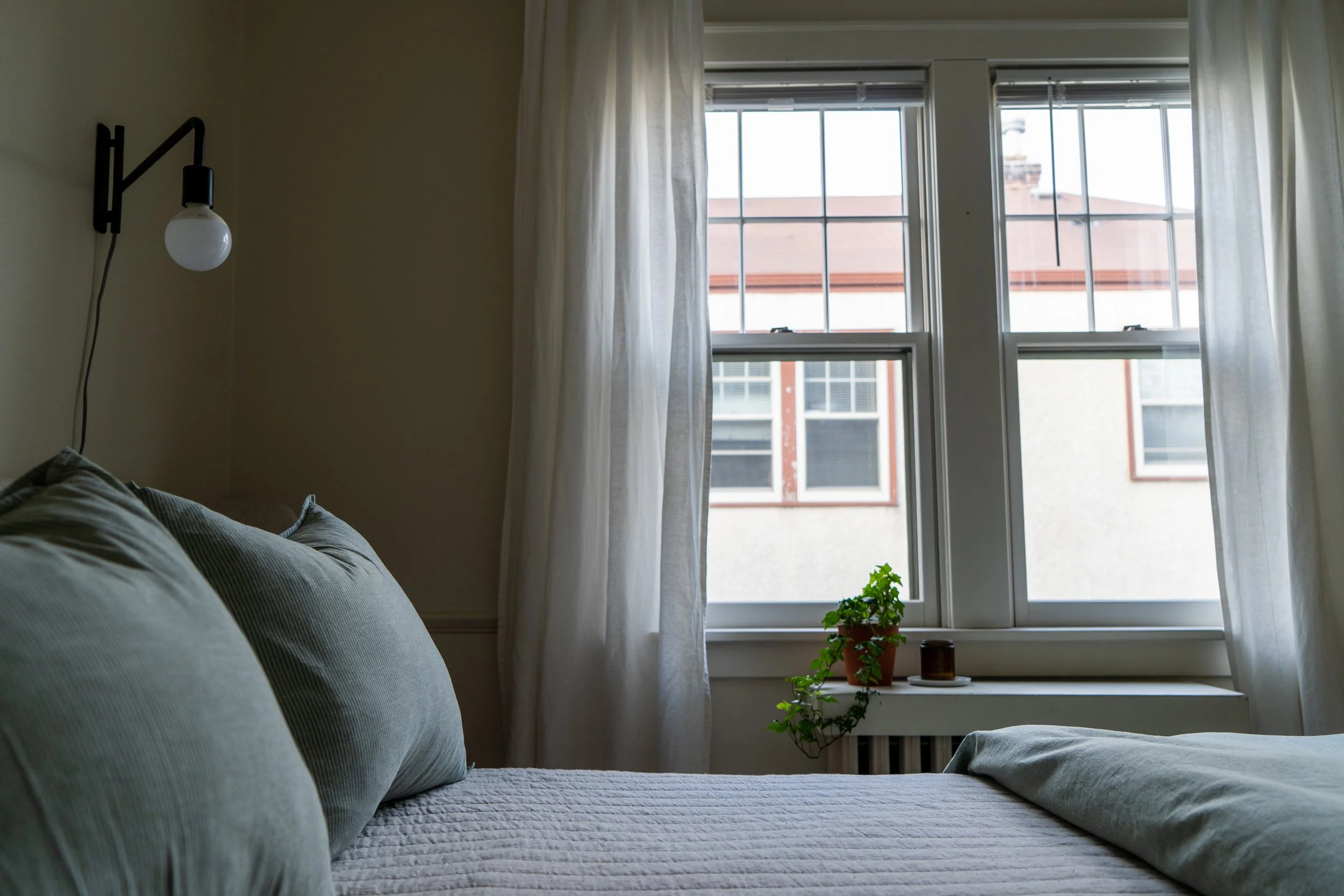Material Health: Textiles
Textiles are essential elements in the design of a space, adding texture, color, and pattern. When it comes to upholstery, window coverings, and bedding, natural fibers like cotton, wool, linen, bamboo, and hemp stand out for their beauty, sustainability and functional benefits. In the case of textiles (and many other products & materials) it’s valuable to seek out and purchase from ethical and transparent manufacturers to get the full environmental and social benefit of the natural fiber. In the post below we dive deeper into each material and the popularity of polyester and synthetic fabrics.
Cotton
Cotton is a staple in the world of textiles, and for good reason. Its natural softness and breathability make it an ideal choice for upholstery, bedding, and window coverings alike and its versatility allows it to be woven into a range of patterns and textures. The cotton plant is prone to insects which makes it a common target for fertilizers & pesticides. For this reason, it is preferable to look for organic & sustainably sourced cotton.
Benefits of Cotton
Softness and Comfort
Breathability
Ease of Care
Absorbency
Wool
Wool has long been celebrated for its durability and insulating properties. As an upholstery fabric, wool stands out for its incredible strength and ability to retain its shape, making it an excellent choice for high-use areas. Its natural elasticity helps prevent wrinkling and sagging, ensuring that your furniture and rugs look fresh and well-maintained for years.
Benefits of Wool
Durability
Thermal Regulation
Natural Stain & Odor Resistance
Moisture Wicking
Bamboo
Bamboo textiles are an exciting development in the world of natural fibers. Made from the fast-growing bamboo plant, these textiles offer a sustainable alternative to more traditional fabrics. Bamboo is known for its softness and natural antibacterial properties. The processing of bamboo into fibers for textiles is intense and involves multiple hazardous chemicals which not only raises the cost of bamboo textiles but also challenges its benefits as a natural fiber.
Benefits of Bamboo
Rapidly Renewable
Softness
Antibacterial Properties
Hemp
Hemp is gaining popularity for its strength and durability. This robust fiber is used in a variety of textiles, from upholstery to drapery. Hemp’s fibers are highly resistant to wear and tear, and it boasts a unique, earthy texture that adds a natural and relaxed aesthetic to interiors.
Benefits of Hemp
Durability
Eco-Friendly
Breathability
Linen
Linen is a highly versatile fabric, offering a blend of aesthetic and practical benefits. Linen comes from the flax plant which is unique in that all parts of the plant can be utilized making its fiber production zero waste. Linen is breathable and temperature-regulating, making it a great choice for bedding and upholstery and perfect for creating a calm, airy atmosphere.
Benefits of Linen
Sustainable & Eco-friendly
Durability
Hypoallergenic
Temperature-regulating
Natural Texture
Polyester and Synthetic Fabrics
While natural fibers offer many benefits, polyester and other synthetic fabrics are also widely present and commonly used in interior textiles. Synthetic fibers begin from petroleum which is currently a cheap resource that is very widely available. Recently there are more and more textiles available with recycled content (especially polyester) that in some cases are using recovered ocean plastics melted down & spun into fibers for interior use.
Benefits of Synthetics
Durability
Cost-Effectiveness
Recycled Content
Wide Range of Styles and Finishes
Fabric Finishes
Many, if not most synthetic or blended fabrics have some sort of finish applied. This could be a stain or water repellant, antimicrobial, or UV protection. In short, we prefer to select textiles without finishes to avoid the use of additional chemicals. There’s certainly more that could be said here - maybe in another post.


